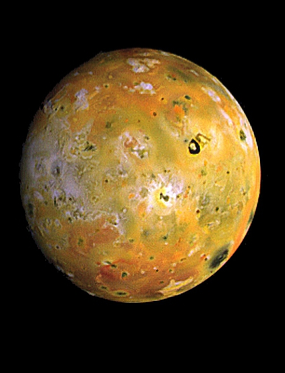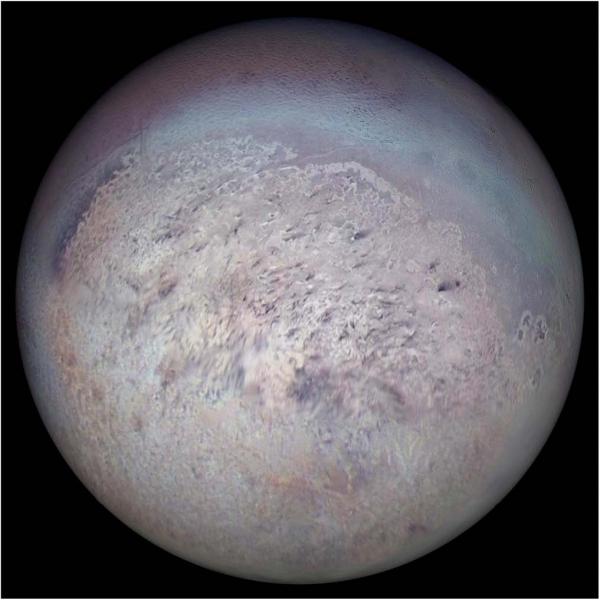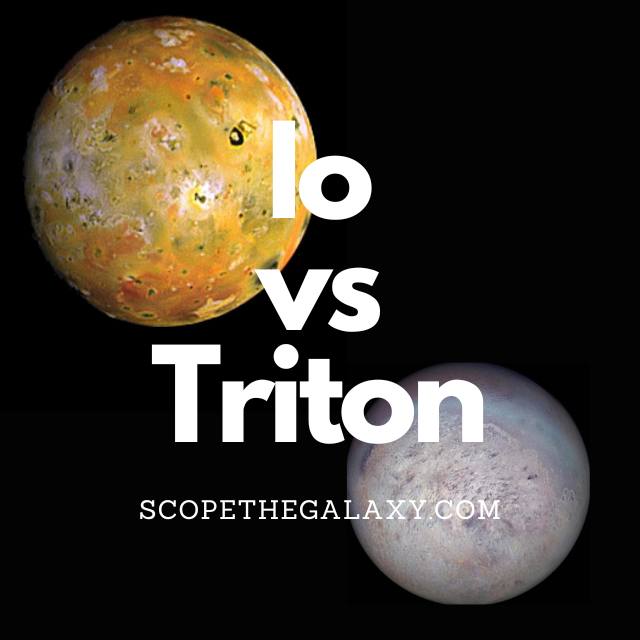*This post may contain affiliate links. This means we may make a commission if you purchase an item using one of our links*
The main differences between Io and Triton are that Io is bigger with a diameter of 3,643km whilst Triton’s is 2,706km, Io is the most volcanically active entity in our solar system whilst Triton is also volcanically active but not to the same degree and Triton orbits its planet in a retrograde motion whilst Io orbits its planet in the normal counter clockwise direction.
There are various other differences between these two natural satellites so, continue reading for a more detailed look at each of these celestial bodies along with their similar and unique features below.
What Is The Moon Io?
Table of Contents

The Moon Io – also known as Jupiter I – is the third largest of the Galilean moons, which has the closest orbit to Jupiter. It is the fourth-largest moon in our solar system by size – with a diameter of 3,643km – but has the highest density of all moons in the Milky Way.
In addition, Io has the strongest surface gravity of all moons and the least water by atomic ratio compared to any other astronomical object in our solar system.
Perhaps the most interesting feature of this lunar body is the 400 active volcanoes on its surface, which make it the most volcanically active object in the Milky Way; some of these volcanoes can exude plumes of sulfur to a height of several hundred miles.
The reason for this intense activity is the tidal heating caused by friction in the moon’s interior. Thanks to Io’s proximity to Jupiter, it finds itself caught between the gravity of its planet plus the two nearby moons – Ganymede and Europa. And this creates extreme tidal forces.
A side effect of these tidal forces is heat, which keeps most of Io’s crust in liquid form. Because of this, the surface of Io experiences a constant state of renewal; sites once home to large craters are slowly filled with molten lava and liquid rock.
While the complete makeup of Io’s surface is not yet defined, theories suggest that its main component could be sulfur and sulfur compounds because of the varied coloring. Silicate rock could also be a likely component as it would account for the high temperatures.
Io orbits Jupiter from a distance of around 422,000km, with an orbit that takes 42.5 hours to complete. Sitting 778,000,000km from the Sun, the surface temperature of this planet sits around -130 degrees Celsius. But due to the intense volcanic activity, the lava flows can reach temperatures of 1649 degrees Celsius, which is far hotter than anything on Earth.
What Is The Moon Triton?

Triton is the largest moon of Neptune, whose most unusual feature is its retrograde orbit. Triton is the only major moon in our solar system which orbits in the opposite direction of its planet’s rotation.
First discovered on 10th October 1846 (just 17 days after the discovery of its planet, Neptune) by British astronomer William Lassell, “Triton” comes from a merman in Greek myth; a name which perhaps stems from the composition of this faraway moon.
The diameter of Triton is approximately 2,706km, making it a similar size to Earth’s moon. However, we know that its mass is far less than the first estimates suggested because data from Voyager showed that the surface is icy and highly reflective, a less dense composition than the dark surface of our moon.
This icy surface has resulted in ice based natural satellite displaying temperatures in the region of – 235 degrees Celsius.
This lower density stems predominantly from the water-ice interior encasing a denser rock core. Still, the mean density of 2.06 grams per cubic cm remains higher than that of any of Saturn’s or Uranus’ moons. In addition, Triton holds more than 99.5% of the mass of everything that orbits the planet Neptune and its total mass is greater than every smaller satellite in the solar system combined.
Scientists think that Triton may be an object from the Kuiper Belt that Neptune’s gravity captured millions of years ago. This is because it shares many similarities with the dwarf planet Pluto – the best-known world within the Kuiper Belt.
This frozen world is a land of geological oddities with craters and a collection of depressions and ridges known as cantaloupe terrain. The geysers found on this moon shoot plumes of nitrogen as high as 8km high, which creates a thin atmosphere of nitrogen.
In around 3.5 billion years, Triton’s orbit will travel too close to Neptune, and the planet’s gravitational pull will break the moon apart, creating a ring system.
How Are Io And Triton Similar?
As both are natural satellites, Io and Titan do share a few similarities, which includes the following:
- Both have a hotter central core.
- Both have a rocky, terrestrial surface.
- Both are spherical in shape.
- Neither have rings surrounding them.
- Both are tidally locked to their planet.
- Both orbit their planet in an elliptical pattern.
- Neither have a magnetic field.
- Neither have tectonic plates
- Both are volcanically activity.
Differences Between Io And Triton
In regards to the differences between the two, they include the below:
- Io is bigger with a diameter of 3,643km whilst Triton has a diameter of 2,706km.
- Triton orbits Neptune whilst Io orbits Jupiter .
- Triton has a very thin exosphere composed mostly of nitrogen with small amounts of methane whilst Io’s is composed mostly of a thin sulfur dioxide layer.
- A day on Triton takes 5.877 days whilst a Io day is 42 hours.
- It takes Triton 5.877 days to orbit Neptune whilst Io orbits Jupiter in around 153 hours.
- Io orbits Jupiter at an average distance of 422,000km whilst Triton is 354,800km from Neptune.
- Triton’s average temperature is around -235 degrees Celsius whilst Io’s average temperature is -130 degrees Celsius.
- Io’s density is 3.53 g/cm³ whilst Triton’s density is 2.06 g/cm³.
- Io’s mass is 1.345×10^23 kg whilst Triton’s mass is 2.14 × 10^22 kg.
- Triton’s gravitational strength is 0.779 m/s² whilst Io’s is 1.796 m/s².
- Triton is the only moon in our solar system that orbits its planet in a retrograde orbit.
- Io is the most volcanically active entity in our solar system.
Summary
Triton and Io have their fair share of common features such as the fact both are natural satellites, both are volcanically active and that both are amongst the largest moons in our solar system.
However they differ too, whether it be in regards to how active they are volcanically, their mass, gravity, density, the length of their days and more. As a result both Triton and Io are distinct entities in their own right.


